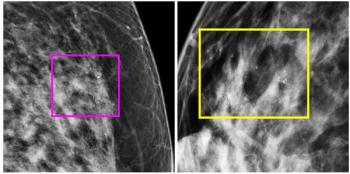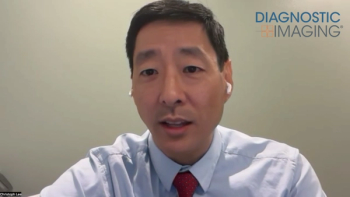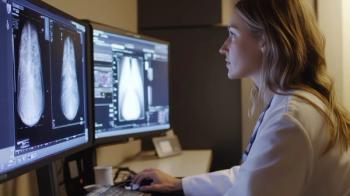
Stricter standards threaten access to mammography practice
No doubt, the Mammography Quality Standards Act has improved the quality of breast imaging. As this month's cover story clearly establishes, long-time mammographers have seen a decided improvement in clinical practice since the MQSA was adopted in 1992.
No doubt, the Mammography Quality Standards Act has improved the quality of breast imaging. As this month's cover story clearly establishes, long-time mammographers have seen a decided improvement in clinical practice since the MQSA was adopted in 1992.
But a danger lurks in using the success of the MQSA as a guide to the future. Major issues in breast imaging remain unresolved, and an Institute of Medicine report that is already beginning to shape discussions about revision of the MQSA doesn't adequately address these issues.
A year ago, we reviewed in Diagnostic Imaging the growing problems of access to mammography. We found that a number of factors-including closure of breast imaging centers and reduced interest in the practice of mammography-have combined to lead to a decline in access to mammography services. What's become clear is that these factors are symptoms of bigger issues: malpractice worries and relatively low reimbursements. Radiologists and residents are turning to other modalities and types of practice to avoid the worries and low payments that mammography produces.
On page 30, we take a close look at this year's Institute of Medicine report and its likely impact as a new assessment of the MQSA approaches. The report, which was commissioned by Congress to help guide the 2007 reauthorization of the MQSA, suggests new directions in regulation of mammography, moving from standards for equipment to steps to improve the quality of interpretations. Existing equipment regulations would be streamlined but also strengthened and extended to ultrasound and MR.
Putting the access issue and the IOM report together illustrates the conundrum. Access to mammography is shrinking, but continued wide variations in the quality of mammography (and the MQSA's demonstrated success) will be interpreted as a need for more regulation.
How is a new and expanded regulatory scheme going to be received by a mammography community that is getting smaller and already rebelling at low reimbursement and high malpractice risk? The costs of complying with the existing system are estimated at $14 to $16 per screening exam, and these current problems are beginning to reduce access to mammography services.
The IOM report is not silent on the question of access. It directs the FDA to collect and analyze data on mammography workforce and services and to devise strategies to recruit and retain skilled breast imaging professionals.
Essentially, the IOM says to study the problem and recommend solutions. This suggestion, however, is not nearly as specific as its recommendations for stronger regulation. Some mammographers rightly wonder whether the access questions will be shoved aside and ignored by Congress as the regulatory burdens increase. The American College of Radiology says higher payments should precede added regulations.
The IOM report does endorse higher payments, but it doesn't say by how much. It also offers some intriguing ideas, among them "centers of excellence" in mammography-essentially a more centralized reading process similar to what exists in parts of Europe-whose radiologists could, on the basis of better results, become eligible for a no-fault system of malpractice. Further, a separate IOM report last year suggested preliminary mammography reads by nonphysicians as a partial solution to the access issue.
These ideas need to be explored. But there also needs to be a greater focus on coming to grips with the access issue, particularly as it is shaped by reimbursement and malpractice considerations. Unless that happens, the IOM-proposed reforms will improve the quality of care for a shrinking group of women who still have access to mammography screening.
What are your thoughts on this topic? Please e-mail me at jhayes@cmp.com.
Newsletter
Stay at the forefront of radiology with the Diagnostic Imaging newsletter, delivering the latest news, clinical insights, and imaging advancements for today’s radiologists.

























